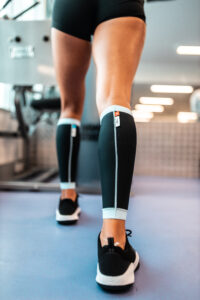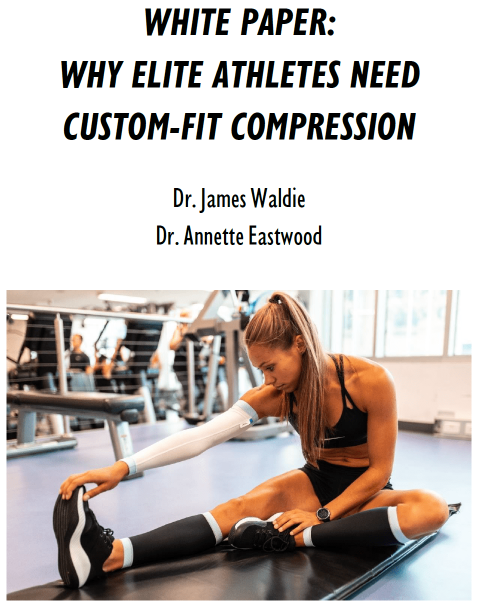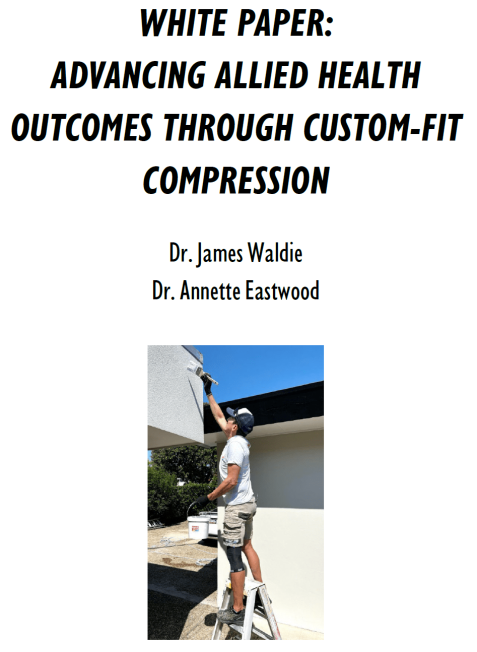With the Paralympic Games underway, we look at the research into the benefits of compression garments for Para athletes and discuss the advantages of custom fit compression garments for these athletes.
Compression garments are widely used by athletes as a way to improve performance and recovery and minimise the negative effects of travel. Extensive research has been conducted with able bodied athletes and a few key studies have focused on the effects of compression garments specifically for Para athletes.
The circulatory benefits of compression such as improved venous return, an increase in stroke volume and cardiac output can have benefits for many Para athletes. In particular, those with spinal cord injury, where pooling of blood in the lower limbs is likely to occur due to peripheral vascular insufficiency and poor muscle pump function (Rimaud et al., 2007).
A key study investigating the effects of lower limb compression on elite wheelchair athletes showed that wearing compression socks during exercise can maintain submaximal performance during wheelchair exercise in high level spinal cord injured athletes (Vaile et al., 2016). An increase in post exercise arm blood flow was also reported, suggesting that there was a more efficient distribution of blood flow to the working arm muscles during exercise.
Compression garments were shown to influence metabolic responses during recovery in paraplegic subjects, with lower levels of blood lactate reported during the recovery period following maximal exercise (Rimaud et al., 2007). This is particularly important in Para sports such as wheelchair basketball, rugby or tennis, where repeated high intensity efforts are required.
To get the optimum physiological benefits from compression garments, it is important they fit correctly. Current research is recommending the use of custom fit compression garments to ensure accurate levels of compression are applied (Brophy Williams et al., 2020).
Athletes competing in Para sports have different impairments which affect their physical and physiological systems in different ways. For this reason, customised compression is even more important for these athletes because it can be tailored specifically to their individual physical requirements.
CAPE use a 3D body scan to create custom fit compression garments specifically for each individual athlete to ensure correct fit. One of the unique features of CAPE customised compression is that the left and right side of the garments are sized differently according to an individuals measurements. This is particularly important for Para athletes who may have very significant asymmetry. CAPE calf sleeves and leggings for Para athletes often have a very noticeable difference in left and right leg size, and this is critical to ensure accurate and appropriate compression for both legs. Off the shelf compression garments do not take into account differences in limb size and consequently do not provide accurate levels of compression for these athletes – it is impossible to have both legs receiving the correct compression. Athletes participating in Para sports have reported that they are unable to wear off the shelf compression garments due to an incorrect fit on one limb.
Paralympic athletes will often have extensive travel schedules in the lead up to a major events such as the Paralympic Games and could therefore benefit from customised travel compression garments to minimise the risk of DVT associated with travel. Off the shelf garments sized purely on height and weight would not provide these athletes with the necessary level of compression to be effective.
With custom fit compression garments for performance, recovery, travel and rehabilitation, CAPE provide the most advanced compression garments that can be tailored to the specific needs of Para athletes. We welcome the opportunity to assist many Para athletes on their journey to the Paris 2024 Paralympic Games.
REFERENCES
-
Brophy-Williams, N., Fell, JW., Halson, SL., Kitic, CM., Driller. MW. (2020): Pressure gradient differences between medical grade and sports compression socks, The Journal of The Textile Institute, DOI: 10.1080/00405000.2020.1730664
-
Rimaud, D., Calmels, P., Roche, F., Mongold, JJ., Trudeau, F., DEvillard, X. (2007). Effects of graduated compression stockings on cardiovascular and metabolic responses to exercise and exercise recovery in persons with spinal cord injury. Arch Phys Med Rehabil 88(6):703-709.
-
Vailie, J., Stefanovic, B., Askew, CD. (2016). Effect of lower limb compression on blood flow and performance in elite wheelchair rugby athletes. The Journal of Spinal Cord Medicine 39 (2). 206-211.





